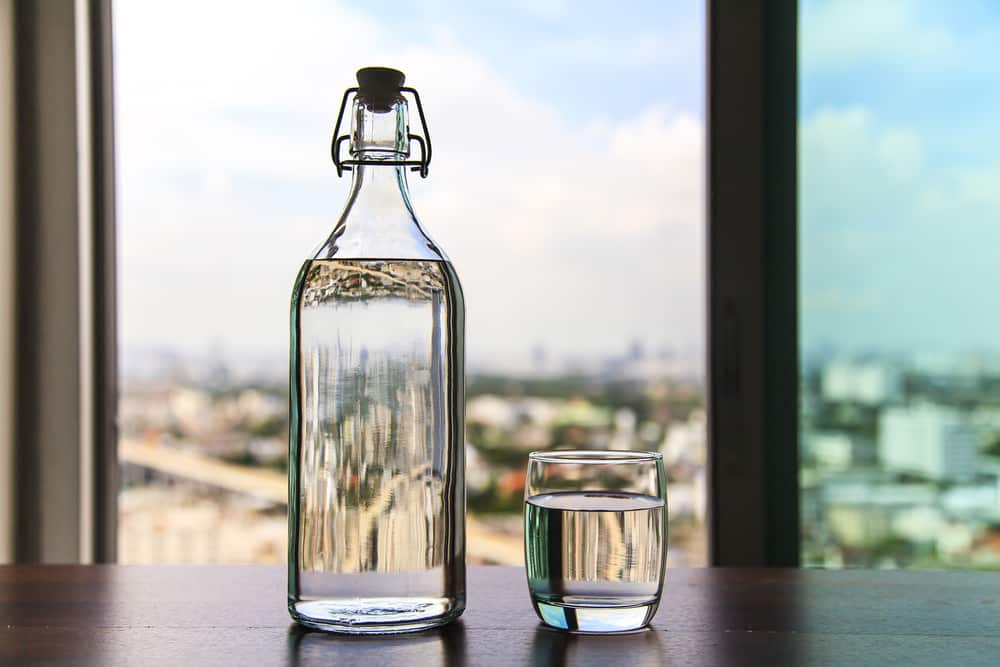
It’s common for people to microwave beverages and food in plastic containers. For the longest time, it’s been said that microwaving in plastic containers leads to the risk of cancer. This is why many people consider if it’s safe to put water bottles in the microwave oven or not. In case you have been wondering the same, there are multiple factors to keep in mind!
Can You Put A Water Bottle In The Microwave?
No, it is not safe to put a water bottle in the microwave bottle unless the bottle is labeled with the microwave-safe sticker. The plastic water bottles are designed to be disposable, which means they are not suitable for heating and reusing. Similarly, you should not microwave plastic items, such as water bottles and food boxes, unless it’s recommended by the manufacturers.
On the other hand, if the plastic bottle is safe for the microwave, it should be heated on the reheat settings (you can also use the medium heat level) for two minutes only. When you are microwaving microwave-safe plastic bottles, there are low chances of warping, leaching of harmful plastic components, and melting. However, plastic water bottles are only suitable for one-time use and should be disposed of.
The plastic water bottles are designed with the recycling number on their bottom. #1 number is the polyethylene terephthalate (PET), which is somehow microwave-safe. However, it is suggested that you only put the water bottle in your microwave if the bottom has #5 plastic. So, if you go ahead with heating the water bottle in your microwave, there are various precautionary measures to follow to ensure the chemicals don’t infuse into the water.
- First of all, you cannot use the highest temperature settings while heating the water bottle in the microwave because it can melt the plastic and also leaches toxins into the water
- It is suggested to use only low heat to medium heat because it’s somehow safe for the plastic bottles
- You should remove the cap from your water bottle and increase the timer by fifteen seconds to thirty seconds, depending on how warm the water should be. Taking off the cap will ensure that water is heated without trapping heat (the trapped heat creates steam, which not only results in melting and warping but it also leads to an explosion of the bottle)
In the majority of cases, women tend to put the water bottle in the microwave to ease the cramps (the hot water bottle provides more comfort and pain relief). So, if you have to heat the bottle for cramps, there is nothing to worry about because you won’t be drinking the water, and you won’t have to worry about plastic compounds leaching into the water.
Secondly, when the water is heated on the surface, it is called superheated water, which is a safety hazard. This hot surface will prevent the air bubbles from rising on the top, so when the bottle is moved, it will end up erupting like a volcano.
The Suitable Time Duration For Heating The Water Bottles
At this point, it’s clear that water bottles can be put in the microwave with a few safety precautions. Similarly, one of the most important considerations is the time duration. The time duration depends on the wattage of your microwave. If the microwave is operating at 700 watts, the water bottle should be used in the microwave for more than two minutes. On the other hand, if the microwave has a lower wattage, you can microwave the water bottle for over five minutes.
The microwave-safe water bottles can easily resist the microwave heat for over 240 hours as long as you are using the medium or low heat setting.
The Right Way Of Microwaving The Plastic Water Bottle
Now, if you want to go ahead with microwaving the plastic water bottle, you must follow the steps outlined below;
- Set the microwave’s power level at medium heat or low heat
- Remove the bottle’s cap and put the bottle in your microwave oven
- Set the timer for 15 seconds to 30 seconds increment until the water reaches the desired temperature
All in all, you must not use the maximum temperature level to prevent leaching and damage to the bottles.
